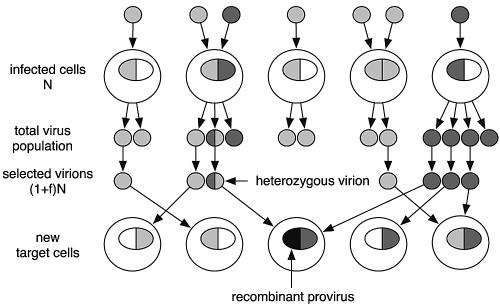FIG. 1.
Schematic illustration of a viral replication cycle in the computer model. A number of N cells are either singly or doubly infected. They contain one or two proviruses inserted in their nucleus. For simplicity, only two viral types are shown, either as light or dark gray. Infected cells produce virions according to the fitness of the inserted proviruses. From the total virus population, (1 + f)N virions are selected that will infect N new target cells. The infecting virions are distributed randomly to the cells. A heterozygous virion can produce a recombinant provirus during reverse transcription, here shown in black.

